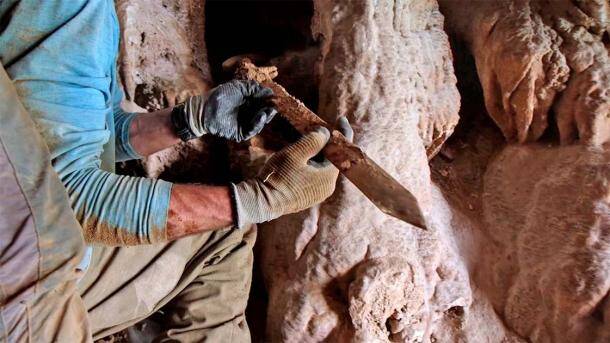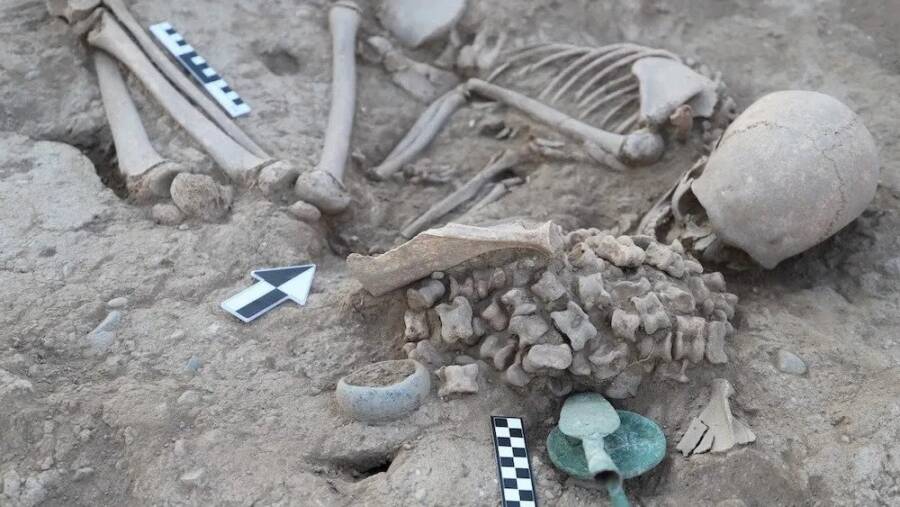Shipwreck discovered intact in Lake Michigan, Roman swords uncovered in an Israeli cave, girl found buried with 180 animal bones in Kazakhstan.
Eerily Intact Shipwreck From 1881 Discovered At The Bottom Of Lake Michigan

Tamara Thomsen/State Historical Society of Wisconsin via APBuilt in New York in 1867, the Trinidad carried grain throughout the Great Lakes region until May 11, 1881, when a leak caused it to sink off the coast of Wisconsin.
On May 11, 1881, the shipping schooner Trinidad sank into the icy waters of Lake Michigan off the coast of Wisconsin. Though Captain John Higgins and his eight-man crew survived the sinking, the ship’s mascot, a large Newfoundland dog who was sleeping when the vessel started to go down, was not so lucky. Meanwhile, the ship itself sat undisturbed on the floor of Lake Michigan — until now.
Shipwreck hunters just uncovered the remains of the Trinidad after 142 years, its wreck so intact that the crew’s possessions still sit neatly tucked away inside the deck house.
Read more about this incredible find here.
Four Roman Swords Thought Stolen By Judean Rebels 1,900 Years Ago Were Just Found Hidden In A Cave Near The Dead Sea

IAAOne of the four Roman swords discovered by archaeologists in Israel.
In a cave in the Judean Desert, archaeologists have made a rare discovery: four 1,900-year-old Roman swords, which experts believe were taken as booty by Judean rebels during the Bar Kokhba revolt.
Archaeologists found the four swords in a small fissure inside the cave, which sits in what is now the Ein Gedi National Park near the Dead Sea. In a statement from the Israel Antiquities Authority (IAA), researchers were ecstatic: “Finding a single sword is rare — so four? It’s a dream! We rubbed our eyes to believe it.”
Dig deeper in this report.
Archaeologists In Kazakhstan Unearth Bronze Age Burial Of Girl Laid To Rest With More Than 180 Animal Bones

Kazakh Ministry of Science and Higher EducationThe girl was likely buried between 3200 B.C.E. and 1000 B.C.E.
Thousands of years ago, a young girl was laid to rest in present-day Kazakhstan with a number of peculiar grave goods, including 180 animal ankle bones and a small, intricate carving of a frog on a disc. Now, archaeologists excavating the site are working to discern their meaning.
The girl’s grave is located near Ainabulak village in the east of the country and dates from Central Asia’s Bronze Age, which lasted from roughly 3200 B.C.E. until 1000 B.C.E. Hers is one of more than 100 Bronze Age burial mounds that the archaeologists have uncovered at the site, but her grave certainly stands out.
Read on here.





